Shevlin Sebastian's Blog, page 81
December 4, 2016
The Kochi Biennale is primed for the December 12 inaugural
Published on December 04, 2016 21:55
November 28, 2016
Spicy Delights
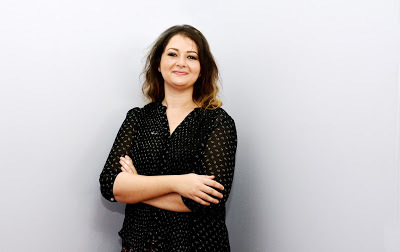
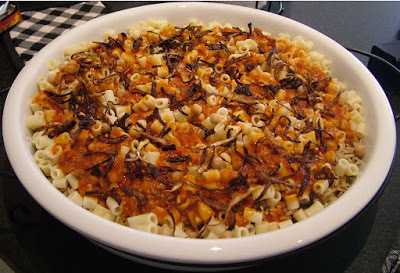 On her first visit to Kochi, Egyptian chef Mariem Magdy talks about her experiences
On her first visit to Kochi, Egyptian chef Mariem Magdy talks about her experiencesPhoto of Mariem Magdy by Ratheesh Sundaram; the koshary dish
By Shevlin Sebastian
Mariem Magdy always had a soft corner for India. That's because the Egyptian studied in an Indian school, while growing up in Kuwait. “All my teachers were Indian and they will always have a special place in my heart,” says Mariem. Mariem got an opportunity to come to Kerala recently when she took part in the Spice Route Culinary Festival.
“And Kerala is just as I imagined it,” she says. “It is like heaven. The people are so sweet. India is very simple and, yet, at the same time, it has many layers.”
As a chef, Mariem is very familiar with Indian cuisine. “In the Gulf countries, there are lots of Indian restaurants,” she says. “But Kerala has a different cuisine. The aroma of the food is completely different. It is much lighter and healthier than the rest of the cuisine in India.”
At the festival, Mariem enjoyed eating the Karimeen Pollichathu (fried pearl spot fish). “This fillet fish, infused with spices, and wrapped in a banana leaf was very good,” she says. “These are items which I have never tasted before, especially the spices. Most of the spices in India have a completely different smell and taste. In Egypt, we mostly use cumin and coriander.”
And she got some valuable tips on her trip. “I understood that if you dissolve the spices in water, before adding it to the food, then each ingredient balances against each other, with no one particular spice overpowering the other,” she says. “I will be trying this when I return to Cairo.”
Meanwhile, it is interesting to know that one of the most popular dishes in Egypt, the koshary, has an Indian origin. “During the second World War, when Indians soldiers were stationed in Egypt, they would make this food,” says Mariem. “Soon, the Egyptians loved the food so much that they forgot their original food. Today, at every street corner, there is a koshary shop.”
A koshary consists of black lentils cooked with rice mixed with a spicy tomato sauce, infused with vinegar. “You can also add chick peas, fried onions and pasta,” she says. “It is a meal by itself and has become part of our street food culture.”
Other dishes include a foul – a form of beans which is cooked slowly and is placed inside sandwiches. Then there is the ful medames, which is a dish of cooked fava beans served with vegetable oil, cumin, parsley, garlic, onion, and lemon juice. Then there is the Marouk, which is a form of chappati. “We use flour, water and oil and cook it on a flat pan,” says Mariem. “We then stuff different types of beans inside it.”
Interestingly, the Egyptians don't eat meat all that much. And when they do, it is usually at official functions like weddings, festivals and feasts. “We like beef, lamb, camel and goat, but we are not dependent on animal protein,” says Mariem.
In Cairo, Mariem works as the Culinary Director for Food Tracks, which has been established by a top Swiss chef Markus Iten. “The company is focused on training and educating chefs,” says Mariem. “We also provide consultancy for food and beverage establishments. As for those investors who want to set up something, we provide the expertise.”
Meanwhile, Mariem is looking forward to coming back to Kochi in the future. “I love the place,” she says.
(The New Indian Express, Kochi and Thiruvananthapuram)
Published on November 28, 2016 22:18
November 27, 2016
Setting Up An Artistic Space
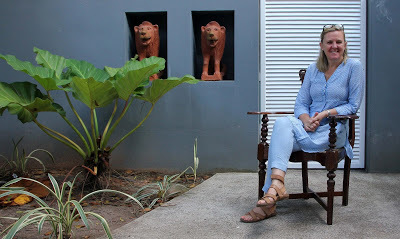
 After initial hiccups, Helga Peeters, of Belgium, is establishing an art centre in Jew Town, Kerala
After initial hiccups, Helga Peeters, of Belgium, is establishing an art centre in Jew Town, KeralaPhotos of Helga Peeters by Albin Mathew
By Shevlin Sebastian
Helga Peeters stood in the middle of a 200-year-old warehouse on Bazaar Road in Mattancherry, near Kochi. There were broken bricks all over the floor. When you looked upwards, there were gaps in the tiled roof. But what was making her look worried, on a day in mid-October, was that the workers had played truant. “It will be difficult to meet the deadline of starting this art centre in time for the opening of the Kochi Biennale on December 12,” she says.
Helga breaks into a smile. “That's India for you,” she says. “Everything can go smoothly, one day, but on the next, work can come to a standstill. It's a challenging time for me.”
But, in early November, luck turned for Helga. Following discussions with the owner of a 100-year-old house, at the nearby Jew Town, Helga was able to lease out a 3000 sq. ft. space. About 2250 sq. ft. will be given, temporarily, for three months, for use by the Students' Biennale, while the remaining area will be an art centre.
She got the idea of starting an arts centre when she attended the second edition of the Biennale in 2015. “I felt inspired by the energy and excitement of the art festival,” she says. “It seemed to me that a new wind was blowing through Fort Kochi. And I wanted my guests to experience it first-hand.”
The Antwerp-based Helga runs the travel firm, ‘Anubhuti’ (This is a Sanskrit word which means, 'to feel something that you would like to treasure'). Over the past decade or so, she has brought groups of tourists to different parts of India: Ladakh, Kolkata, Darjeeling, Jaipur, Mumbai and Kochi.
“I am not just taking them from one place to another, but I make them immerse themselves in the local milieu,” says Helga. “To travel through this colourful, complex, beautiful and spiritual country is magical as well as inspiring.”
In Kerala, and especially Fort Kochi, tourists enjoy the European heritage – Portuguese, Dutch and British – as well as the strong tradition of Ayurveda and yoga. “The nature in Kerala is unique,” says Helga. “It is green in Belgium, too, but not so tropical. And our people love the sea.”
The trip is also a moment of self-reflection. “During the visit, my compatriots are able to compare their own lives to what they see in India,” says Helga. “It make them aware that things can be done differently.”
Usually, at the end of the trip, they say they are ready for their next trip to India. And they end up coming five to six times. “And they always tell me it is a real anubhuti,” says Helga, with a smile.
As soon as her art centre gets established, Helga is planning to bring talented and upcoming artistes from Belgium. “It will be such a different experience for them,” says Helga. “But it will be an exciting one, too. Because they will realise that India is like an onion. There are layers upon layers. It is so fascinating. And this is the reason why I also keep coming back. On every trip I learn something new.”
(Sunday Magazine, The New Indian Express, South India and Delhi)
Published on November 27, 2016 20:48
November 22, 2016
True To Life
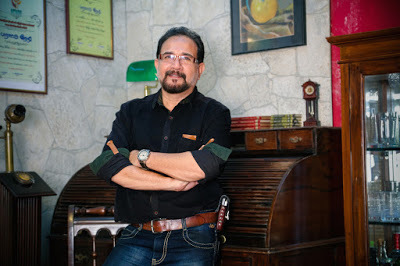
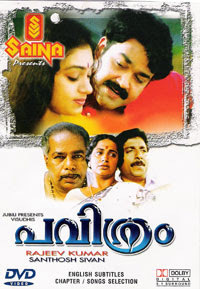 COLUMN: LOCATION DIARY Production Designer Sabu Cyril talks about his experiences in the films, ‘Adwaytham’, ‘Pavithram’ and 'Anniyan'
COLUMN: LOCATION DIARY Production Designer Sabu Cyril talks about his experiences in the films, ‘Adwaytham’, ‘Pavithram’ and 'Anniyan'Photos: Sabu Cyril; the poster of 'Pavithram' By Shevlin Sebastian During the shoot of the film, ‘Adwaytham’ (1991), at Kozhikode, by director Priyadarshan, art designer Sabu Cyril had to construct a temple similar to the Lord Krishna temple at Guruyayur. When the set was ready, an Assistant Director (AD) led Srividya to the set. The moment she stood outside, she immediately took off her slippers. “The AD told Srividya that it is a set and there was no need to remove the footwear,” says art designer Sabu Cyril. “Srividya could not believe it. She said, 'It looks like a real temple'.”
On the morning of the shoot, Sabu went back to his Chennai home to have a bath. “When I returned in the afternoon, one of the assistant directors told me that Kunnakudi Vaidyanathan [a renowned classical violinist] was looking for me,” says Sabu.
(The New Indian Express, Chennai, Kochi, Thiruvananthapuram and Kozhikode)
Published on November 22, 2016 20:23
November 21, 2016
The Pillars Of The Body
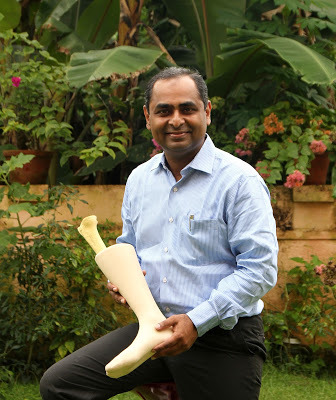
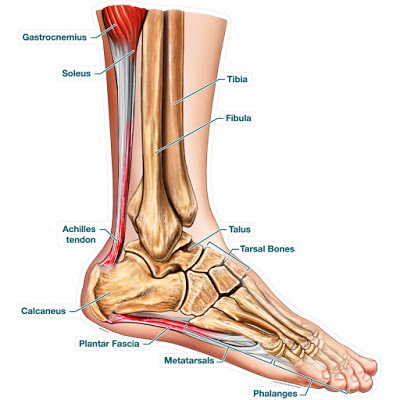 Dr Rajesh Simon, the newly-appointed secretary of the Indian Foot and Ankle Society, talks about problems, as well as solutions for the feet
Dr Rajesh Simon, the newly-appointed secretary of the Indian Foot and Ankle Society, talks about problems, as well as solutions for the feet Photo of Dr Rajesh Simon by Albin Mathew; a cross-section of the foot
By Shevlin Sebastian
For one year, home-maker Valsa Kumari, 54, endured a pain in her toes. She went to several doctors but, despite many investigations and medicines, the pain persisted. The normally gregarious Valsa began to feel low. Soon, she began taking antidepressant and sleeping pills.
It was in this situation that she came to Dr Rajesh Simon, Sr. Consultant – Orthopaedics (Foot and Ankle and Trauma) of VPS Lakeshore Hospital, Kochi. After a careful examination, a surgical repair was done to a small ligament at the base of her second toe. “Today, Valsa is back to her laughing self,” says Dr. Simon. “I don't blame the other doctors, but you need specialised knowledge to solve this problem.”
Dr. Simon is, probably, the only Foot and Ankle expert in Kochi. Recently, he was selected as the National Secretary of the Indian Foot and Ankle Society. “For a long time, foot and ankle had been a part of orthopaedics,” says Dr. Simon. “But a sub-speciality has developed in the West during the past 15 years. This is happening very slowly in India. As for me, I got special training from the University of Birmingham, USA, as well as in Munich, Germany.”
Asked about the commonest problems faced by people, Dr. Simon says, “Heel pain or plantar fasciitis. This happens more to women, because they wear heels. It leads to a bony projection in the heel called a spur, which is painful. When you wear footwear, with a narrow base, the toes, bones and ligaments are tightly pressed against each other. There is a likelihood of them being damaged. This results in bunions [a swelling on the first joint of the big toe].”
The other problems include Achilles tendinosis, flat feet and corns (thickening of skin near the toe).
As for ankle sprains, it usually happens to sportsmen, like basketball and football players, when their ligaments get torn. But the good news is that it can be healed through rehabilitation. “Only 20 per cent of the cases require surgery,” he says.
Meanwhile, two years ago, Dr Simon held a foot and ankle symposium at Kochi. Two foot and ankle doctors came from the US. So, on a free evening, they went to a mall. And, as they roamed around, they also looked at the feet of the people. One of them said, “My God, Rajesh, you have so many patients.” Says Dr. Simon: “Too many people have deformed feet.”
Dr. Simon says that, to avoid problems in the foot, it is important to wear the right footwear. “The footwear should have a broad toe-box,” he says. “The toes should be allowed to spread out. Sandals are relatively fine if you have a back strap. However, stiletto heels does damage in the long run.”
Chappals, for long walks, are a no-no. “You grip the chappal between the first and second toes, like a claw,” says Dr. Simon. “The problems start as you grow older, when you have muscular imbalance, arthritis, and diabetics.”
Diabetic patients have insensate feet. So, a chappal can slip off and the wearer will not know about it. You can then hit a small stone or a thorn, and will only realise it when a passer-by sees blood. “So, the best solution is to use jogging or covered shoes,” says Dr. Simon.
Meanwhile, treatment is divided into four methods: physical rehabilitation, footwear modifications, medicines, and surgery. “Many problems can be solved through simple stretching exercises,” he says. “For me, surgery is always the last option.”
(The New Indian Express, Kochi and Thiruvananthapuram)
Published on November 21, 2016 23:02
November 20, 2016
A Close Look At An Icon
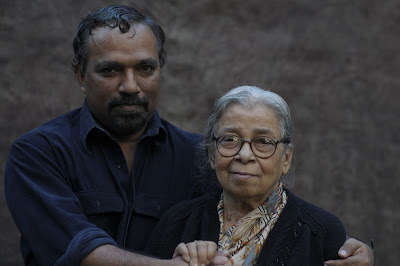
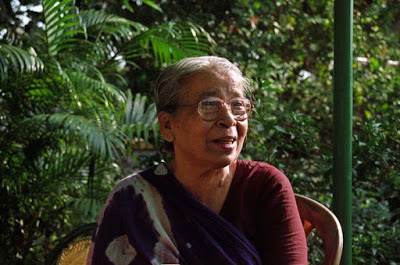 Joshy Joseph’s documentary, ‘Mahasweta Devi – Close Up’ focuses on one of West Bengal’s great writers and tribal activists
Joshy Joseph’s documentary, ‘Mahasweta Devi – Close Up’ focuses on one of West Bengal’s great writers and tribal activists Photos: Joshy Joseph with Mahasweta Devi; the writer
By Shevlin Sebastian
When the documentary 'Mahasweta Devi – Close up' opens, at the recent Signs Film Festival in Kochi, there is an image of an elderly woman, with round-rimmed spectacles, combing her grey hair. Behind her there are book shelves and a calendar hanging on a wall. Then the camera focuses on her face. She seems to be staring intently at something off-camera.
“Mahasweta is watching the film, 'Five', by one of Iran's master film-makers, Abbas Kiarostami [who died on July 4 this year],” says film-maker Joshy Joseph.
The reason Joshy used this method was because of the lack of visual possibilities. “A writer finds it difficult to write in front of the camera,” he says. “So there are no variations in the visuals, unlike if you do a documentary on a dancer or musician.”
Nevertheless, the 40-minute film is an affectionate and intimate look at one of the great writers as well as tribal activists of West Bengal. Mahasweta, who wrote over 100 novels, won the Jnanpith Award, the Magsaysay Award, and the Padma Vibhushan.
Not surprisingly, in the film, Mahasweta talks about one of her favourite stories:
“It was titled ‘Akla’ (Alone). There is a little boy whose parents have gone out and he is alone at home. He has nothing to do. He has finished his homework and is watching TV. Suddenly, next to him, comes and sits a little boy. The boy asks, ‘Who are you?’ The little boy answers, ‘I’m Akla. I came because you’re alone.’”
Joshy also travels with Mahasweta to Nandigram, which became infamous, because of the shooting of 14 people, on March 14, 2007, by the police when the ruling Left Front tried to set up a Special Economic Zone. There, she meets farmers and activists.
On her return journey, by car, there is an amusing moment when she connects with the State PWD minister Kshiti Goswami on the phone and complains about the sorry state of the roads. The minister, like most ministers, says he has no money for developmental works. “Ask one of the multinational companies,” says Communist sympathiser Mahasweta, tongue-in-cheek.
This film is a tribute to one of Joshy's close friends. “I would meet her every evening, because my office is just five minutes from her home,” says Joshy, who is Deputy Director-General in charge of the Films Division, Government of India.
Asked about the character of Mahasweta, Joshy says, “She was my friend, sister, mother and grandmother. All those roles, which different people play in your life, it was combined into one person. I miss her every single day.”
Mahasweta died on July 28, at the age of 90.
(Sunday Magazine, The New Indian Express, South India and Delhi)
Published on November 20, 2016 21:40
November 16, 2016
Behind Prison Walls, A Soaring Imagination
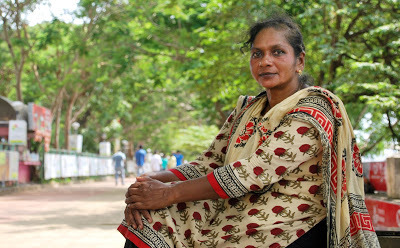
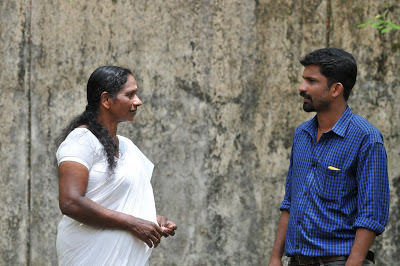 Lissy Sasi, who is serving a 25-year jail term, at Kannur Women’s Prison, is on a month’s parole, which will end on November 19. She talks about her upcoming book of short stories and poems
Lissy Sasi, who is serving a 25-year jail term, at Kannur Women’s Prison, is on a month’s parole, which will end on November 19. She talks about her upcoming book of short stories and poemsPhotos: Lissy Sasi at Marine Drive, Kochi. Pic by K. Shijith; Lissy with Subin Mananthavady
By Shevlin Sebastian
On October 19, when Lissy Sasi, 43, stepped outside the gate of the Women's Prison, at Kannur, on a one-month parole, she felt strange. “For six years whenever I stepped out, I was accompanied by two police escorts,” she says. “Now there was nobody.”
But her younger sister, Sherly, nephew, Dinu, and her sister Rani's husband, Joseph, were there to welcome her. Lissy’s family felt worried that if people recognised her, when she travelled on a bus they would physically attack her or make cruel comments. (Lissy is serving a 25 year jail term for transporting drugs).
So they hired an Omni Maruti car. Before they set out, to Wayanad, they brought chicken biriyani as well as oranges and grapes from the prison outlet. “They were scared to take me inside a restaurant,” says Lissy. “So we ate the food along the way.”
Lissy was granted parole because her 84-year-old mother, Rosakutty, is unwell. “She is asthmatic and has high blood pressure,” says Lissy. “There is nobody to look after her. My brother and sister live elsewhere. Recently, my mother almost died because of breathing difficulties, but I could not help, because I was in jail.”
In fact, what helped her get parole is her increasingly high profile in the media. She has written a book, which consists of eight short stories and fifteen poems. The book also includes a biography written by former journalist Subin Mananthavady, who is now the managing director of the Thiruvananthapuram-based Kokkopelli Public Relations.
The book, titled ‘Kuttavaliyil Ninnu Ezhuthukariyileykku’ (From Convict to Writer), by Poorna Publications, will be released soon. “I am a huge fan of Mohanlal, so Subin is trying to get the superstar to release it,” says Lissy.
When Subin was a journalist, he did a magazine series on the changing face of Kerala prisons. That was when he met Lissy.
“She told me that she had a desire to be a writer,” says Subin. “In fact, she had written a few poems.” And when Subin read one of them, he was impressed. “She had a nice style,” he says, of the author who had studied only upto Class 10. Thereafter, he got her white sheets of paper and pens and asked her to write.
Lissy went at it in right earnest. She would write in the evenings and in the mornings, when she had to keep an eye on the cows. “The jail superintendent, Sakuntala P, and welfare officer Sobhana K.N., encouraged me a lot,” says Lissy, while on a recent visit to Kochi.
For the prisoner, there is a clear motive behind the writing. “Since I have a negative image in society, I want to change this through my writing,” she says.
And while doing this, Lissy is also waging a battle in the Kerala High Court, to reduce the prison term. “It is too harsh,” she says. “Others who have done similar offences have got between five to ten-year terms.”
Meanwhile, Lissy is trying to enjoy her last few days of freedom, before she re-enters prison on November 19. But what proved to be a moment of joy was the reaction of her neighbours when she arrived. “They came swarming towards me, with smiles on their faces,” she says. “A few cried and asked how I ended up in such a mess.”
Indeed, Lissy has had some bad experiences, including the death of her husband, at age 36, due to alcoholism. “I have faced many difficulties in life,” she says. “But I will fight on.”
(The New Indian Express, Kochi and Thiruvananthapuram)
Published on November 16, 2016 21:20
November 15, 2016
Snaky Encounters

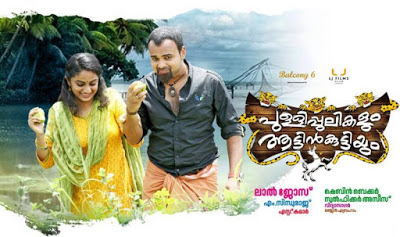 COLUMN: LOCATION DIARY
COLUMN: LOCATION DIARY Scriptwriter M. Sindhuraj talks about his experiences in the films, 'Pattanathil Sundaram', 'Pullippulikalum Aattinkuttiyum', and the upcoming 'Munthirivallikal Thalirkkumpol'.
Photos: M. Sindhuraj by Melton Antony; the poster of the 'Pullippulikalum Aattinkuttiyum'
By Shevlin Sebastian
During a location search for 'Pattanathil Sundaram' (2003), director Vipin Mohan and scriptwriter M. Sindhuraj arrived at a house, in Ottapallam, where the hero, Kizhakkethil Sundaresan (Dileep), a grocery store owner, was supposed to stay.
“There was a high gate and it looked locked,” says Sindhuraj. “So, we decided to climb over it. After much effort, we reached the top, but, suddenly, the gate swung open. That was when we realised it had been unlocked all along.”
Both Vipin and Sindhuraj had a good laugh.
Sindhuraj also had a good laugh during the shoot of the film, 'Pullippulikalum Aattinkuttiyum' (2013). Set in Kuttanad, a boatman, played by an actor called Sabu, was trying to get close to a widow, Kainagiri Revamma (Bindu Panicker). So, one day he stepped into the house, but as soon as Revamma saw him, she chased him away by swinging a sickle.
“Sabu jumped into the water,” says Sindhuraj. “But when he surfaced, we got a shock. He was bald. That was because his wig had come undone.”
The crew members made a frantic search but could not locate it. So, Sindhuraj quickly inserted a line in the script and Revamma says, contemptuously, “He set out with a wig on his head.”
A few years earlier, Sindhuraj decided to stay at the Peermade Government Guest House to write the script of what later became 'Jalolsavam' (2004). But the moment, he entered the room, he felt uneasy.“I did not know the reason why,” he says. “So I asked a staffer, Mani (named changed), to spend the night in the same room as me. The next day, after breakfast, I left.”
Three months later, Sindhuraj met Mani by accident at Alleppey. “Mani told me that soon after I had left, they discovered a huge snake just above the bathroom door in my room,” says Sindhuraj. “In the end, the employees killed it.”
But, during the shoot, of the 2013 film, 'Pullippulikalum Aattinkuttiyume', at Alleppey's Punnamada, a snake was left undisturbed. There was a scene when Kunchako Boban and Namitha Pramod arrived in a speedboat, jumped into the water, waded ashore and lay on the bank.
However, when the shot was being taken, on the bank, the crew noticed a snake on a branch right above the duo. “Everybody kept quiet, because they did not want to frighten Kunchako and Namitha,” says Sindhuraj. “But we kept a sharp eye on the snake through the monitor. Thankfully, it did not move at all. It was only when everything was over that we told them about the snake.”
Meanwhile, at this moment, the shooting is going on for Sindhuraj's latest script, 'Munthirivallikal Thalirkkumpol'. Directed by Jibu Jacob, and slated for a Christmas release, it stars Mohanlal and Meena.
Recently, a scene was set at a bus terminus in Kozhikode. But when Mohanlal arrived, hundreds of people gathered around, there was a traffic jam, and it became difficult to shoot the scene. “So the location was shifted to Thamarassery,” says Sindhuraj. “The cameras were kept hidden. Then Mohanlal was brought in a car. He got out and started walking. Before the people could realise that it was indeed the superstar, the shot was canned, Mohanlal got into the car and vanished.”
However, at an outdoor shoot, at Narkhanda, near Shimla, Mohanlal did not do the vanishing act. Again, there was a large crowd present. “I was surprised to note that they were all non-Malayali fans from North India and abroad, waiting patiently for a photo with the star,” he says. “That was when I understood the extent of Mohanlal's popularity.”
(The New Indian Express, Kochi, Thiruvananthapuram and Kozhikode)
Published on November 15, 2016 21:46
November 8, 2016
A Burnt Arm
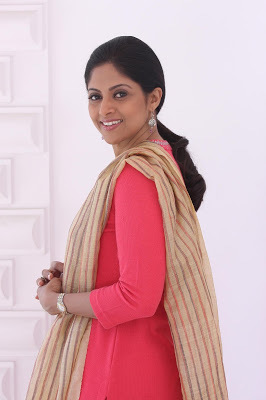 COLUMN: LOCATION DIARY
COLUMN: LOCATION DIARY Nadia Moidu talks about her experiences in the films, 'Nokketha Doorathu Kannum Nattu', 'Poo Mazhai Pozhiyudhu' and ‘M. Kumaran/Son of Mahalakshmi
“Even though I was shocked, because the needle had not been sterilised, I just kept quiet and swallowed the pain,” she says. “But then, M. Raja, the director, got very nervous over what had happened. He immediately rushed me to the hospital, where a nurse gave me a tetanus injection, and ensured that I faced no problems in future.”
(The New Indian Express, Kochi, Thiruvananthapuram and Kozhikode)
Published on November 08, 2016 21:47
The Roar Of The Tiger
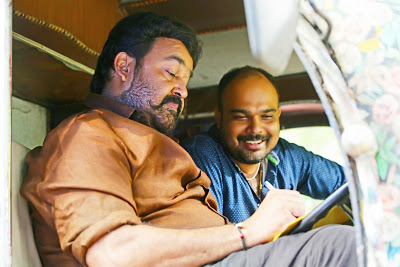
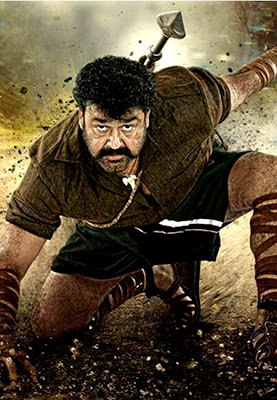 Director Vysakh talks about his film, 'Pulimurugan', the first Mollywood film, to earn Rs 100 crore at the box officePhotos: Mohanlal with Vysakh; a scene from the film
Director Vysakh talks about his film, 'Pulimurugan', the first Mollywood film, to earn Rs 100 crore at the box officePhotos: Mohanlal with Vysakh; a scene from the film By Shevlin Sebastian
Nowadays, strangers, both men and women, call up director Vysakh and say, “I want to kiss you. Thank you for giving us such a varied fare of Mohanlal.”
In the man vs. tiger film, 'Pulimurugan', Mohanlal, as a tiger hunter, displays his histrionics in fun sequences, as a hero, and family man. “He is emotional and loving, he cries and fights courageously,” says Vysakh.
At his villa in Kochi, Vysakh is in a happy mood. And there is a reason for it: 'Pulimurugan' has just crossed Rs 100 crore, which is a first in Mollywood history.
“'Pulimurugan' is a turning point in the Malayalam film industry, in terms of box office receipts,” says senior director B. Unnikrishnan. “It is clear that the market has expanded: to other states in India, the USA and Europe.”
Asked the reasons for its success, Vysakh says, “A good script [by Udayakrishna], Mohanlal Sir's acting genius, smart marketing, and the never-before-seen action sequences.”
Indeed, it is the action sequences, apart from the animation graphics, which are the USP of the film. Initially, when Vysakh did research on man vs tiger fights, he could not find one in world cinema. “There are many tiger movies, like 'The Taking Of Tiger Mountain', 'Two Brothers', 'Life of Pi' and 'Jungle Book', but there is no direct fight between man and tiger. We had to work hard to make it a believable action sequence. We did drawings, and created story boards.”
Vysakh also roped in the Puducherry-born action-choreographer Peter Hein who has done memorable work on blockbusters like 'Sivaji', 'Enthiran', 'Ghajini' and 'Baahubali'.
To get a better idea, Peter, along with Vysakh and a few members of the crew spent three weeks in Vietnam. “We saw 140 tigers on a farm, which belonged to a Member of Parliament,” says Vysakh. “They were wild animals, all in cages. Even Lal Sir spent some time with us. It was hard work.”
But that is Vysakh for you. He has always been a painstaking director. And, thanks to 'Pulimurugan', he has further embellished his resume. Right from the beginning, 'Pokkiri Raja' (2010), nearly all his films – 'Seniors', 'Mallu Singh' and 'Sound Thoma' – have done well at the box office.
But now, he feels a burden and an unexpected pressure. “Yes, I am thinking about this question these days, 'How do I top 'Pulimurugan'?” he says. Thankfully, relief is at hand. Vysakh's six-year-old daughter Isabella comes up and says, “Appa, do you know where my school bag is?”
(Sunday Magazine, The New Indian Express, South India and Delhi)
Published on November 08, 2016 00:24




